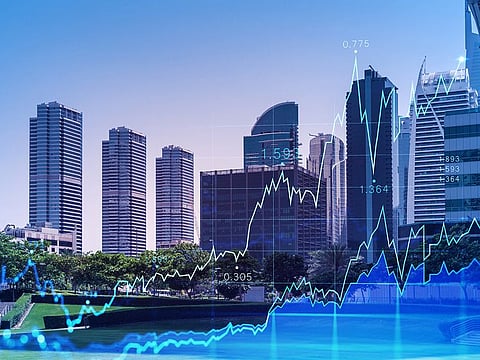Will UAE stock markets be the biggest draw for investors?
Investor inflows into stocks is building up nicely – and that’s just fine

Over the last two decades, there has been a new theory constructed stating that investing in real estate is actually safer than investing in UAE capital markets.
The reasoning goes as follows:
Banks and the government itself allow greater leverage for real estate (by allowing 80% LTV in real estate assets vs. 50% for stocks). and
Real estate assets do not fluctuate as much because there is no daily screen that shows the price volatility.
This lack of fluctuation creates less anxiety and therefore is a better ground for building wealth. It does not take a rocket scientist to figure out the irony of the above argument.
Allowing for greater leverage in an asset (because of its perceived safety) increases the amount of financial fragility. And the incentives put into place to facilitate that risk increase periodically tests the financial system. (In 2007-08 for the entire real estate sector and from 2021 to present for the commercial and retail sector in America and most of Europe).
Bringing back legacy projects
Of course, end-use leverage ignores the leverage that is in developers’ balance-sheets, which has also increased dramatically over the last two decades. It means that when things go wrong, the result is stalled and/or distressed projects (Dubai Lagoons, Burj Al Alam, Lifestyle City, Falcon City, City of Arabia, Pentominium, etc.) which then takes years if not decades to unwind as they make their way through litigation.
Some of these get resuscitated and some end up in the auction process, but in all cases, investors have to wait for a prolonged period of time to get part or all of their capital back.
In Dubai and the UAE, the current cycle (which most analysts are now begrudgingly reporting lower values and volumes) will continue to have prospects of growth that will make investors prosperous. But the point to note is that this prosperity has nothing to do with the inherent safety of the asset itself but rather its valuation process.
Having a more volatile price cycle in capital markets simply because it can be priced every day does not in any way increase the riskiness of the asset itself. Capital markets in the UAE have handily out-performed real estate in the current post-Covid cycle, although you would hardly know it by looking at the headlines. (You just have to look at stocks like Parkin and UPP just this year to see the returns, let alone the overall index).
That does not mean that they will continue to do so in every cycle, but one time, the ability of an asset to outperform depends on a combination of macro factors as well as its inherent intrinsic value.
Commercial real estate makes bold comeback
In the current boom for commercial assets, what is easily forgotten is that in 2008-10, this class of assets fell by in excess of 65%. In many cases the asset prices have still not reached those levels.
Likewise in the US, commercial assets have fallen in some cases by more than 50% over the last three years, leading to a wave of foreclosures. And in the process making some of these assets attractive again.
Capital allocation can be done in a variety of ways, but quantitative finance has attempted to make investing into a hard science model (otherwise known as ‘physics envy’). This way of thinking does not map on to the reality of the investing world.
In the last few weeks, the world has been gripped by the potential impact of the tariff tsunami, the on again, off again phenomena of the trade war. The reality is that in private credit the required rate of return has already shot up, signaling that there is a period of underperformance in highly traded asset prices.
Retail investors often play the role of the ‘swing’ investor in determining prices at the margin. They would be well advised to stick to first principles, ignoring self-contradicting and ironical theories of investing and instead focusing on the one variable that they can intuitively understand: the value of the asset.
Sign up for the Daily Briefing
Get the latest news and updates straight to your inbox




